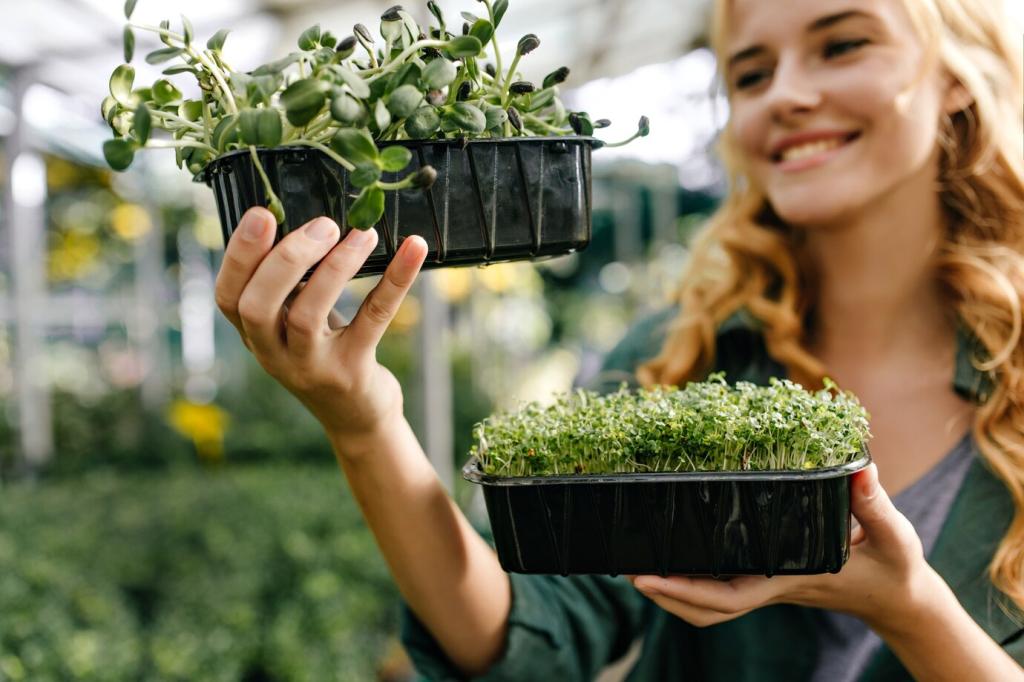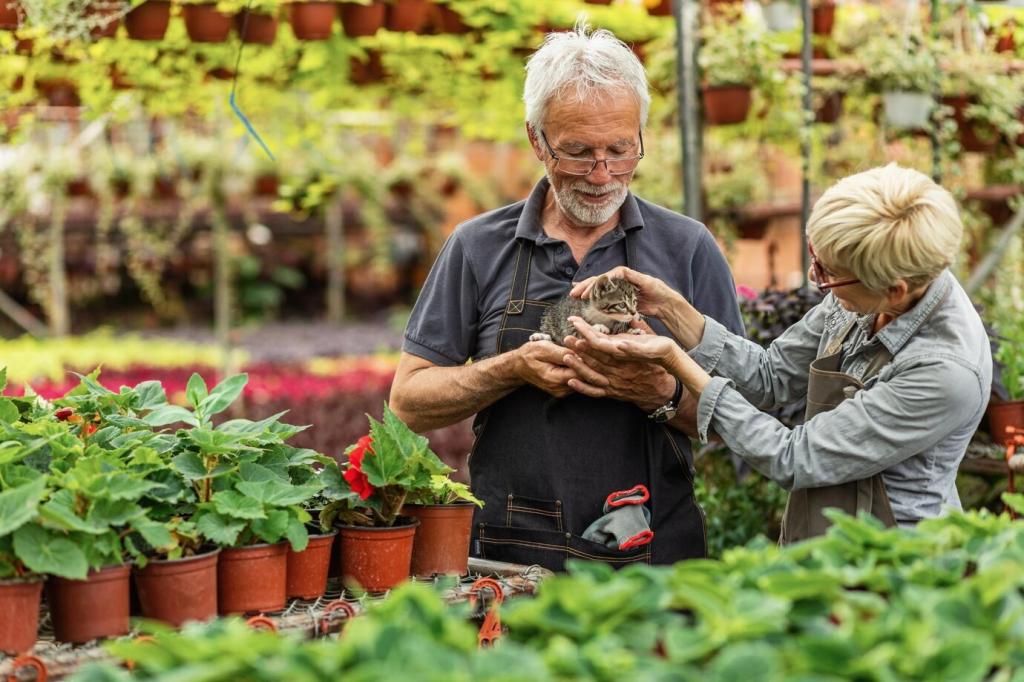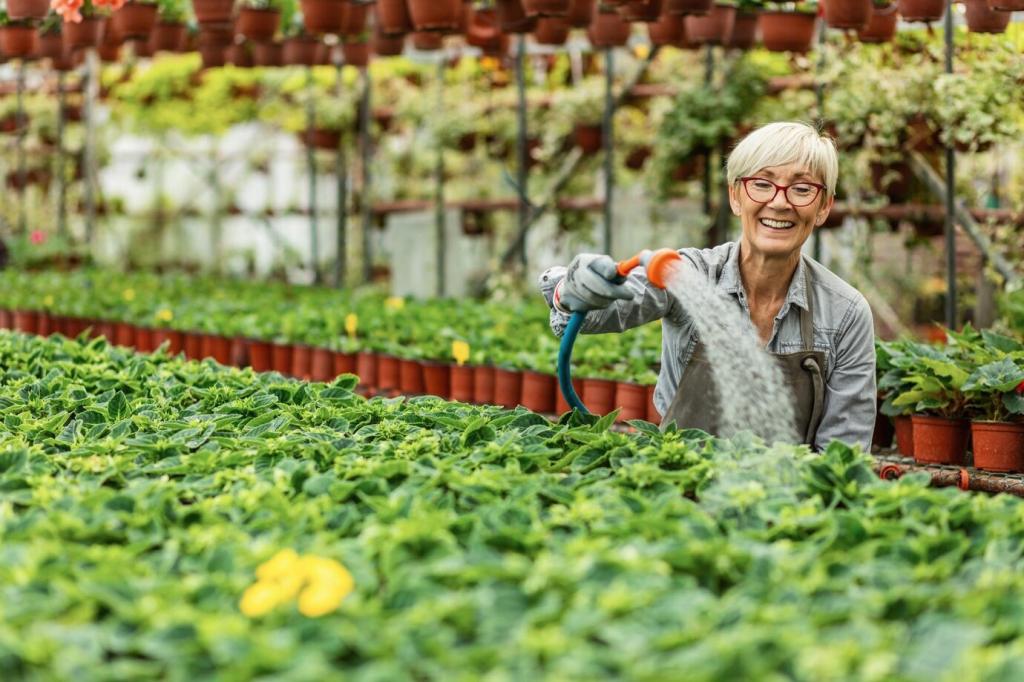Mediterranean Herbal Gardening Practices
Chosen theme: Mediterranean Herbal Gardening Practices. Step into a sunlit world of rosemary hedges, thyme-scented paths, and stone-warmed terraces. Learn timeless, water-wise techniques, gather flavorful harvests, and join a community that shares stories, seeds, and small daily rituals of garden joy.
Full Sun and Friendly Breezes
Mediterranean herbs crave six to eight hours of direct light and gentle airflow. Position beds where morning sun dries dew quickly, protecting leaves from disease. Note prevailing winds, and use hedges or stone walls to shelter tender starts without blocking essential light.
Lean, Fast-Draining Soils
Herbs like thyme, oregano, and rosemary flourish in gritty, mineral-rich soils that shed water. Blend coarse sand, crushed stone, and composted bark to create sharp drainage. Raised mounds or terraced beds prevent waterlogging, preserving concentrated flavors and resilient, aromatic growth.
Water Deeply, Seldom
Emulate coastal hillsides by watering infrequently but thoroughly to encourage deep roots. Morning irrigation reduces evaporation and disease pressure. Avoid constant dampness, which dilutes essential oils. If you leave footprints on the soil surface, wait; herbs prefer a drier rhythm to sing.
Rosemary: The Evergreen Architect
Rosemary anchors paths and terraces with upright or prostrate forms, offering piney fragrance and year-round structure. Bees swarm its winter-spring blooms. Prune lightly after flowering to keep hedges dense. Brush a hand along branches and your kitchen plans instantly write themselves.
Thyme and Oregano: Sun-Kissed Groundcovers
From creeping thyme between stones to sturdy oregano along borders, these herbs weave carpets of scent. They shrug off heat, attract pollinators, and intensify flavor in poor soils. Harvest often to keep them low, lush, and generously sprinkled with tiny flowers buzzing with life.
Sage and Lavender: Silvery Resilience
Sage’s velvety leaves and lavender’s purple spires thrive where nights are cool and days are bright. Both prefer airy spacing and lean soils. Their essential oils deter many pests while feeding bees. Dry sprigs for winter stews, teas, and gently fragrant drawer bundles.

Heat-Storing Stonework
Low walls and sunlit steps act like batteries, soaking up daytime warmth and releasing it at dusk. Plant thyme in crevices, letting roots find coolness deep inside. The masonry’s steady microclimate lengthens bloom, sweetens aromas, and invites lingering evening conversations among friends.

Gravel Mulch for Perfume and Drainage
A blanket of pale gravel reflects light to leaves and keeps crowns dry. Each footstep releases perfume when you brush thyme or savory. Gravel limits weeds, reduces splash, and prevents rot at the base of woody herbs through sudden summer downpours and winter thaws.

Terracotta Pots with Purpose
Breathable terracotta moderates moisture, perfect for rosemary, sage, and savory. Elevate pots on feet to improve drainage and move them to chase the sun. Group containers by water need, keeping thirstier basil apart from drought-loving lavender to simplify reliable, attentive care.
Propagation, Pruning, and Harvest Rhythms
Snip semi-ripe cuttings of rosemary, lavender, and sage in early summer, when stems are flexible but firm. Strip lower leaves, dip in rooting hormone if desired, and nestle into gritty mix. Bright shade and steady moisture coax new roots without risking rot.

Water Wisdom: Drip Lines, Olla Jars, and Rain Capture
Install low-flow emitters at the drip line, not the stem. Water deeply, then rest. Mulch hides tubing and preserves moisture. A simple timer keeps consistency, freeing you to observe leaf color, aromas, and pollinators instead of guessing soil thirst by habit.
Water Wisdom: Drip Lines, Olla Jars, and Rain Capture
Bury porous clay pots between herbs, fill weekly, and let water seep gradually to roots. This nearly eliminates evaporation. Pair ollas with gravel mulch for superb efficiency. You’ll be amazed how rosemary and thyme stay aromatic through the fiercest, hottest weeks.

Living Soil and Gentle Pest Care
Mediterranean herbs prefer leanness. Overfeeding dulls flavor. Inoculate with mycorrhizae, add sparse compost, and avoid heavy nitrogen. Leaf color should be vibrant yet restrained. Healthy soil life builds resilience, delivering minerals steadily while keeping roots comfortably exploratory and quietly industrious.
Living Soil and Gentle Pest Care
Plant drought-loving herbs together, and keep basil and parsley slightly apart with more moisture. Marigold, yarrow, and fennel flowers lure beneficials. Mix heights so breezes thread through leaves. Diversity stabilizes microclimates, flavor, and pollinator visits, reducing pest pressure across changing seasons and stresses.


Kitchen and Culture: Stories from Sunlit Courtyards
My neighbor Maria swears rosemary remembers footsteps. She crushed a sprig before every supper, claiming the plant breathed courage into the fish. I tried it once, then always; the simple ritual changed the way evenings gathered around plates.
